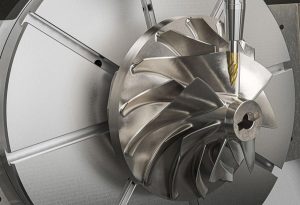CNC milling is a subtractive manufacturing process that uses a rotating cutting tool to remove material from a workpiece. It is a versatile process that can be used to create a wide range of parts, from simple to complex.
This guideline provides some general design tips for CNC milling parts. By following these guidelines, you can help to ensure that your parts are manufacturable and cost-effective to produce.
General Design Guidelines
- Consider the capabilities of the CNC milling machine. Not all CNC milling machines are created equal. Some machines have larger work areas, more powerful spindles, and more axes of motion than others. When designing your part, be sure to keep the capabilities of the machine in mind.
- Design for manufacturability. Think about how your part will be machined. Avoid features that are difficult or impossible to machine, such as sharp internal corners, deep narrow slots, and thin walls.
- Use standard features and dimensions. Whenever possible, use standard features and dimensions in your design. This will make it easier to find a CNC milling machine shop that can produce your part.
- Provide detailed drawings and specifications. When you send your design to a CNC milling machine shop, be sure to provide detailed drawings and specifications. This will help to ensure that your part is machined to your exact requirements.
Specific Design Guidelines
- Avoid sharp internal corners. Sharp internal corners can be difficult to machine and can weaken the part. If possible, use radii instead of sharp corners.
- Avoid deep narrow slots. Deep narrow slots can be difficult to machine and can be prone to breakage. If possible, design your part with wider slots or with holes instead of slots.
- Use the largest internal radii possible. Larger internal radii are easier to machine and make the part stronger.
- Ensure proper wall thickness. Walls that are too thin can be difficult to machine and can be prone to vibration. Use a wall thickness that is appropriate for the size and material of the part.
- Use draft angles. Draft angles are used to facilitate the removal of the part from the fixture. Use a draft angle of at least 1 degree on all vertical walls.
Additional Guidelines
- Design for assembly. If your part will be assembled with other parts, design it with the assembly process in mind. Avoid features that will make it difficult to assemble the parts.
- Design for inspection. Consider how your part will be inspected. Make sure that all features are accessible for inspection.
- Design for cost. CNC milling can be an expensive process, especially for complex parts. Keep the cost in mind when designing your part.
Conclusion
By following these guidelines, you can help to ensure that your CNC milled parts are manufacturable and cost-effective to produce. If you have any questions or concerns, be sure to consult with a CNC milling machine shop.
